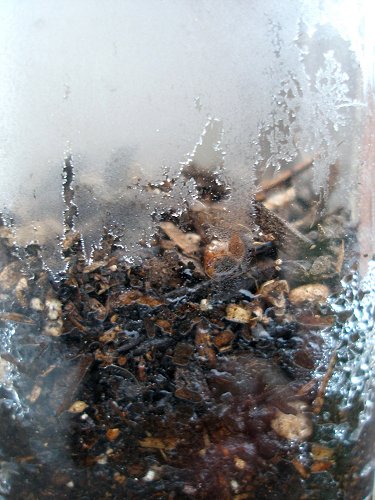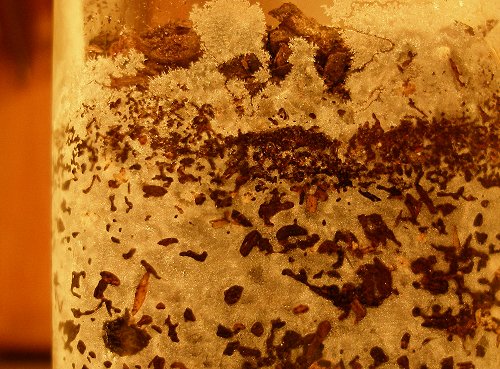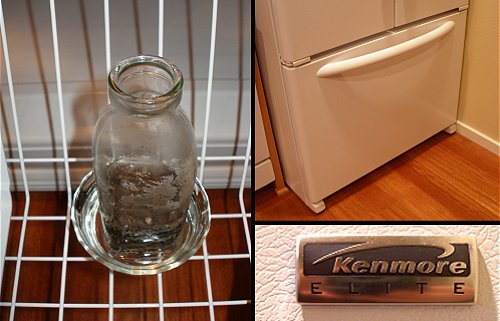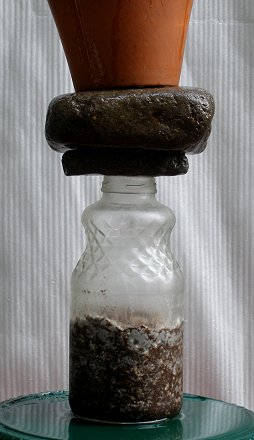 |
|
This is a project that came from continuing to think about frost, the weather and interacting with the environment. I really like this image. I set this up on the porch. It's been quite cold here of late (23 Nov 2007) and I thought I might get something to happen here. Not much did. It's probably warmer near the house for one. And I may have too much moisture in the bottle. This is an ongoing experiment. I'm trying to see if I can get the soil in the bottle to heave up into those nice long crystals. [ This is a frost heave from the garden.
I'm not even sure this is possible inside a bottle. It's kinda fun trying though (maybe there needs to be more allowance for evaporation). 
So today, 27 Nov 2007, it warmed up a tad and rained part of the day (this is NW Oregon after all). I decide to cheat a bit and use the freezer...  Nice frost formation and I think just the slightest bit of heaving as there is a 'lens' of dirt that has come up at the top of the soil (and my wife did indeed notice there was dirt in the freezer - to her credit she did not insist on its removal, just its containment). No very apparent crystals though. |
|
Science Break
"A first principles dynamical theory describes the mechanism of lens formation by the thermomolecular pressure-driven flow of interfacially melted films at the lens-solid boundary." |
|
I take from this that I probably don't have enough of a temperature differential between the lower part of the bottle and the top seeing as how I'm just sticking the whole thing in the freezer. Nice 'in-situ', no 'lensing' (I did know it was called lensing by the way but 'in-situ freezing' as a heave mechanism was new to me). 
(By the way, in the interest of full disclosure, I'm using a Kenmore Elite Bottom Drawer Freezer for these experiments...) 
This looked somewhat better. There appears to be a zone developing between top and bottom. I tried partially thawing and reimmersing in hot water a couple times to see if I could further push the zone development. Looking at this I figured I really needed a deeper soil layer. As much as I like the image I began with I switched to a larger bottle with additional soil and a larger container for the hot water. 
(Yes, this all suddenly seems too involved but I'm this far into it so I want to see what happens.) 29 Nov 2007 - After a couple immersions, with what looked like decent zones developing, I left the bottle overnight in the freezer (with the additional soil and moisture it was taking awhile to freeze all the way through). 
The ice in this upper area was obviously different than the all-over frost I had been getting. 
I'm calling that a lens. It's still not the nice long crystals I'd been looking for but it's a start. More attention to soil composition and a still deeper soil layer might be helpful. There's also no obvious 'heave' happening here. I don't really have a mechanism in place to measure that. I think I'll call it 'minor' for now. |
 |
| back to the frost catcher page |
| © jamie newton |